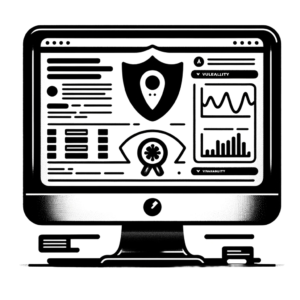Importance of Nessus Reports for Security
Nessus vulnerability scan reports play a crucial role in enhancing the overall security posture of an organization. These reports provide detailed insights into potential weaknesses and vulnerabilities present within the network and systems. By properly interpreting and acting on Nessus reports, organizations can proactively address security issues and mitigate risks efficiently. Understanding the severity levels assigned to each vulnerability is key in prioritizing remediation efforts effectively.
Additionally, Nessus reports offer valuable information on recommended solutions and patches, enabling security teams to take prompt action to secure their infrastructure. Regularly analyzing Nessus reports not only helps in identifying current security gaps but also aids in implementing proactive security measures to prevent future cyber threats. By leveraging Nessus reports for maximum security, organizations can bolster their defense mechanisms and safeguard against potential cyber attacks.
Understanding Nessus Vulnerability Scan Reports
When it comes to cybersecurity, interpreting vulnerability scan results is a critical task in ensuring the safety of your organization’s digital infrastructure. Nessus vulnerability scan reports provide valuable insights into potential weaknesses and exposures that malicious actors could exploit. Understanding these scan results is key to proactively addressing vulnerabilities and fortifying your defenses.
If you would like to learn more about how to conduct a comprehensive vulnerability assessment, you can read our next blog post.
By carefully reviewing the results of a Nessus scan, you can focus on fixing the most important security problems first. This helps you protect your systems and data from the biggest risks. It also allows you to see how well your security measures are working and make adjustments to make them stronger over time.
By reviewing Nessus vulnerability scan reports, you can protect your organization from cyber threats. Understanding the scan results allows you to take specific actions to strengthen security and prevent successful attacks.
Identifying Key Information in the Report
When it comes to maximizing security, understanding and acting on Nessus vulnerability scan reports is crucial. These reports provide a wealth of information about potential weaknesses in your system that malicious attackers could exploit. To effectively interpret and act on these reports, it is essential to identify key information. This includes categorizing vulnerabilities based on their severity levels, prioritizing patching based on the risk they pose to your system, and understanding the potential impact each vulnerability could have on your organization. By paying attention to these key details, you can ensure that your cybersecurity efforts are targeted towards the most critical areas of concern.
Furthermore, analyzing the trends and patterns identified in the Nessus vulnerability scan reports can help uncover systemic issues that may need to be addressed to enhance overall security posture. By regularly reviewing and identifying key information in these reports, organizations can proactively mitigate risks and stay one step ahead of cyber threats.
Actionable Steps for Security Issues
Prioritizing Vulnerabilities
Protecting your systems and data from online threats is extremely important in today’s digital world. One valuable tool that cybersecurity experts use is Nessus vulnerability scanning software, which helps pinpoint weaknesses in your network or system. But it’s not just about running the scan – it’s also about understanding the results and focusing on fixing the most critical vulnerabilities first.
Interpreting and acting on Nessus vulnerability scan reports for maximum security requires a systematic approach. The first step is to identify and classify vulnerabilities based on their impact and exploitability. High-impact vulnerabilities that are easily exploitable should be addressed with the highest priority, as they pose the greatest risk to the security of your systems. Medium and low-severity vulnerabilities should also be addressed promptly to reduce the overall attack surface.
By focusing on fixing the security issues found in Nessus scans, cybersecurity experts can make sure they are using their resources effectively. This way, they can protect against cyber attacks and make their organization more secure.
Creating a Remediation Action Plan
Understanding and responding to Nessus vulnerability scan reports is important for keeping your organization’s network as secure as possible. These reports give you helpful information about any weaknesses or vulnerabilities that hackers could take advantage of. To fix these problems, it’s important to create a plan for making improvements.
The first step in creating a remediation action plan is to prioritize vulnerabilities by how serious they are and how much they could harm the network. Start by fixing the most critical vulnerabilities that could cause the most damage, followed by those that have a high or medium level of risk. This helps make sure that the most dangerous vulnerabilities are fixed quickly, which lowers the overall risk to the network.
After determining which weaknesses are most important to fix, create a thorough plan that details exactly how to address each problem. This plan should clearly define who is responsible for each task, set deadlines for when each issue should be resolved, and regularly check on the progress being made. By taking a methodical approach to fixing vulnerabilities, you can make sure that they are dealt with quickly and successfully, making your organization more secure overall.
Regular Nessus Vulnerability Scanning
Regular Nessus vulnerability scanning is a crucial component of maintaining a secure network infrastructure. Nessus, a widely used vulnerability assessment tool, helps organizations identify security weaknesses and potential threats within their systems. Interpreting and acting on Nessus vulnerability scan reports is essential for maximizing security and proactively addressing vulnerabilities.
When analyzing Nessus scan reports, it’s important to pay attention to the severity levels assigned to each identified vulnerability. High-severity vulnerabilities pose the most significant risk and should be addressed immediately. Medium and low-severity vulnerabilities are also important to mitigate to prevent potential exploitation by attackers.
Using Nessus scan reports involves sorting out security issues by how serious they are and how much they could harm the organization’s safety. After looking at the reports, the main things to do are fixing any problems with the systems, setting up extra security measures, and checking regularly for any new issues to make sure everything stays safe.
Regularly scanning for vulnerabilities using Nessus and taking action based on the results can improve a company’s cybersecurity and decrease the chances of data breaches and cyber attacks.
Review and Maintain Security Policies
When it comes to keeping your company’s digital information safe, Nessus vulnerability scan reports are incredibly important. These reports help identify any weaknesses or vulnerabilities that hackers could take advantage of. But it’s not just about running the scan – it’s also crucial to understand the results and take action to make sure your information stays secure.
One key step in this process is to review and maintain your security policies based on the findings of the Nessus scan. By analyzing the vulnerabilities identified and assessing their potential impact on your systems, you can refine existing policies or implement new ones to address these weaknesses proactively. This proactive approach helps to minimize the risk of security breaches and ensures that your organization stays one step ahead of cyber threats.
It is important to regularly check and update your security policies based on Nessus scan reports in order to keep your cybersecurity strong. Being proactive and staying alert can greatly improve your organization’s ability to defend against cyber attacks.
Key Takeaways on Nessus Reports and Security
Understanding and effectively acting upon Nessus vulnerability scan reports is crucial for maintaining maximum security in cybersecurity. Nessus reports provide detailed insights into potential vulnerabilities present in the network, systems, and applications. It is essential to carefully analyze these reports to identify critical security gaps and prioritize remediation efforts.
Important points to remember from Nessus reports are the importance of regularly checking for weaknesses, quickly fixing any major issues, and putting in place measures to prevent future security breaches. It’s crucial to have a structured plan for managing vulnerabilities, which includes ongoing monitoring, keeping software up-to-date, and staying informed about potential threats.
Moreover, understanding Nessus reports can be complicated and requires knowledge of cybersecurity threats. It is recommended for companies to provide training for their IT staff on cybersecurity so they can better understand and respond to the results of Nessus scans.
In conclusion, Nessus vulnerability scan reports play a pivotal role in enhancing overall security posture. By reiterating and incorporating key takeaways from these reports, organizations can proactively strengthen their defenses and mitigate potential cyber threats effectively.
In today’s world of increasing online threats, it’s important for organizations to use tools like Nessus Vulnerability Scan to keep their systems safe. By regularly scanning for vulnerabilities with Nessus, businesses can find and fix security issues before hackers can take advantage of them. Understanding the reports from Nessus scans is key to knowing how secure a network is and knowing what steps to take to protect it.
When reviewing Nessus scan reports, it’s important to prioritize and address critical vulnerabilities first to prevent potential security breaches. By categorizing vulnerabilities based on their severity levels and impact on the network, organizations can create a structured plan to remediate the most critical issues promptly. Utilizing the information provided in Nessus reports, cybersecurity teams can make informed decisions on patching, configuration changes, or additional security measures to strengthen their defenses.
In simple terms, it’s important to know how to read and respond to reports from Nessus Vulnerability scans. This can help make sure your systems are as secure as possible, and lower the chances of cyber attacks. By following good security practices and using Nessus properly, organizations can improve their ability to deal with security issues and prevent problems before they happen.
